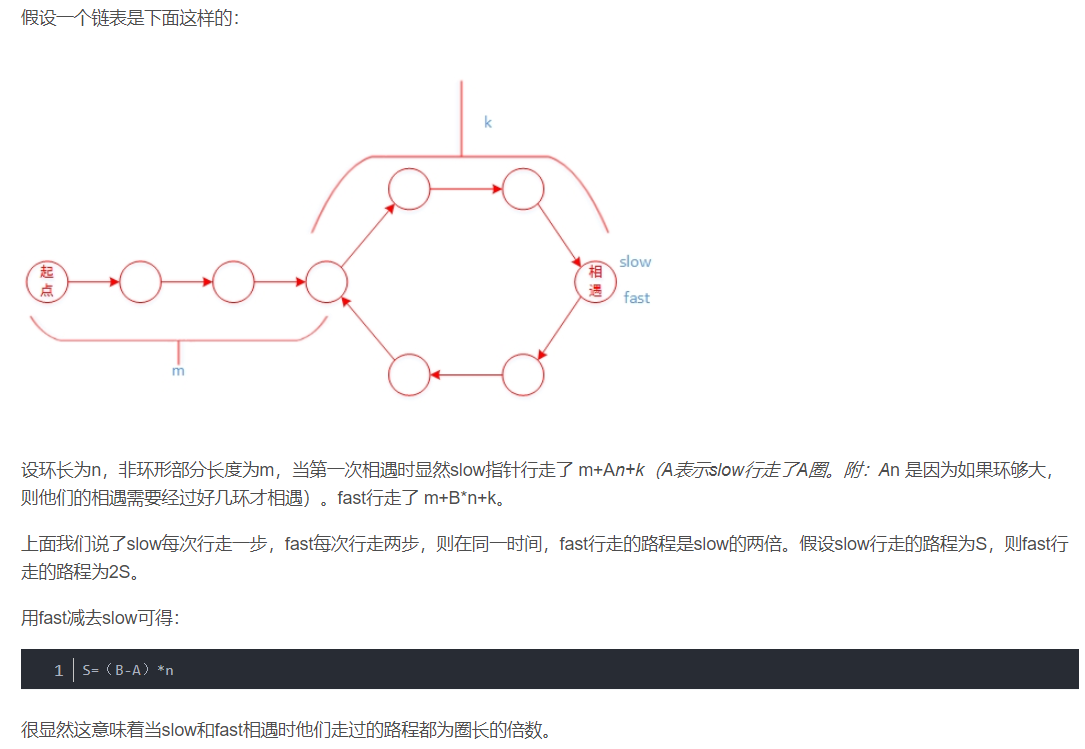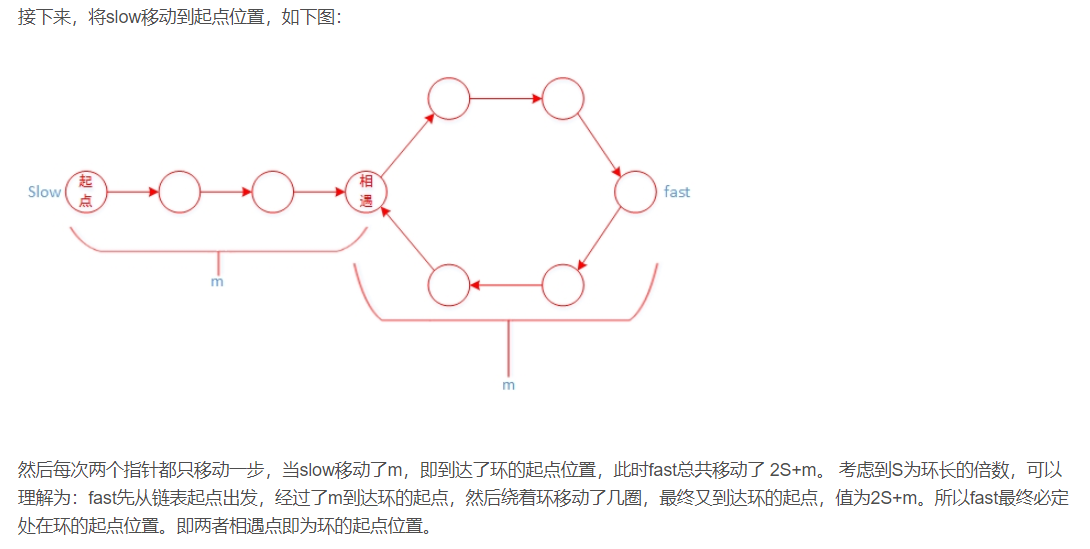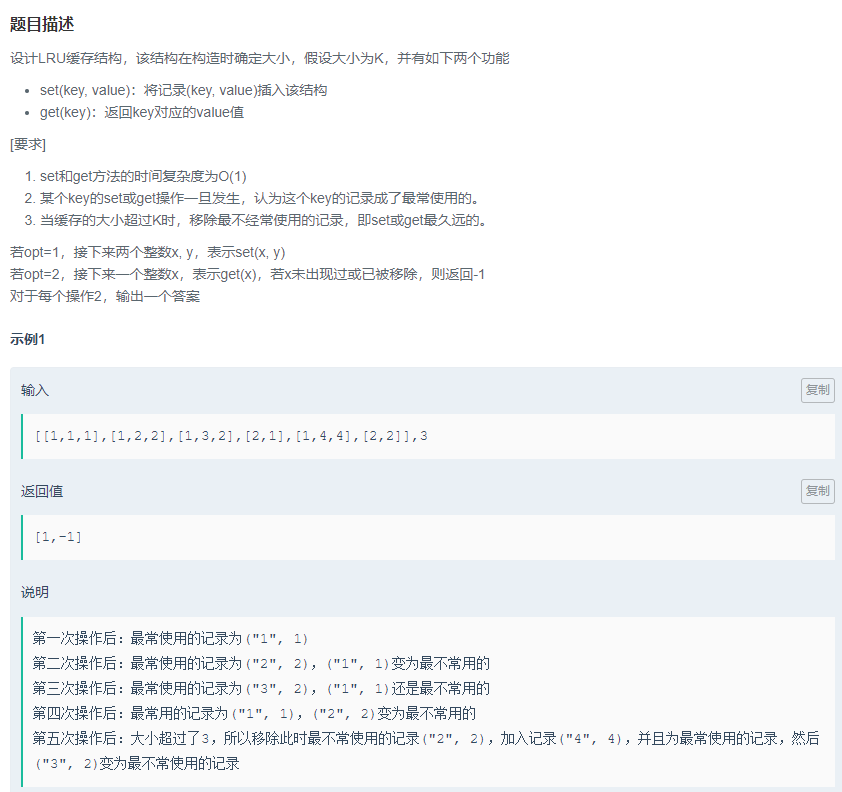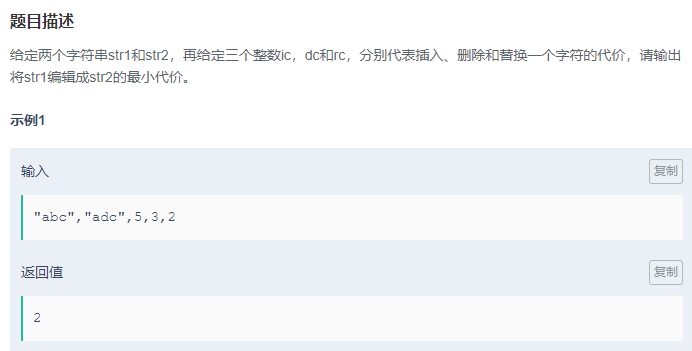技巧: 1、求中间下标用low + (high - low) // 2 而不是 (high + low) // 2,是为了防止low+high溢出
树遍历 层序遍历 1、单栈
1 2 3 4 5 6 7 8 9 10 11 12 13 14 15 16 17 18 import java.util.*;public class Solution public ArrayList<Integer> PrintFromTopToBottom (TreeNode root) Queue<TreeNode> queue = new LinkedList<>(); ArrayList<Integer> res = new ArrayList<>(); if (root!=null ) queue.add(root); while (!queue.isEmpty()){ int len = queue.size(); while (len-->0 ){ TreeNode cur = queue.poll(); res.add(cur.val); if (cur.left!=null ) queue.add(cur.left); if (cur.right!=null ) queue.add(cur.right); } } return res; } }
2、双栈
1 2 3 4 5 6 7 8 9 10 11 12 13 14 15 16 17 18 19 20 21 22 23 24 25 26 27 28 29 30 31 32 33 34 35 36 37 38 39 40 41 42 43 44 45 46 47 48 49 50 51 52 53 54 55 56 57 58 59 60 61 62 63 64 65 66 67 68 69 70 71 72 73 74 75 76 77 78 79 80 81 82 83 84 85 86 87 88 89 90 91 92 93 94 95 96 97 98 99 100 class Solution public int maxDepth (TreeNode root) if (root==null ) return 0 ; List<TreeNode> now_layer=new ArrayList<TreeNode>(); List<TreeNode> next_layer=new ArrayList<TreeNode>(); int res=0 ; now_layer.add(root); while (now_layer.size()>0 ){ res+=1 ; for (TreeNode p:now_layer){ if (p.left!=null ) next_layer.add(p.left); if (p.right!=null ) next_layer.add(p.right); } now_layer=next_layer; next_layer=new ArrayList<TreeNode>(); } return res; } } 非递归先序遍历 import java.util.*;public class Solution public ArrayList<Integer> preorderTraversal (TreeNode root) ArrayList<Integer> res = new ArrayList<Integer>(); if (root==null ) return res; Stack<TreeNode> stack = new Stack<TreeNode>(); stack.push(root); while (!stack.isEmpty()){ TreeNode tmp = stack.pop(); res.add(tmp.val); if (tmp.right!=null ) stack.push(tmp.right); if (tmp.left!=null ) stack.push(tmp.left); } return res; } } 非递归中序遍历 import java.util.*;public class Solution ArrayList<Integer> res = new ArrayList<Integer>(); public ArrayList<Integer> inorderTraversal (TreeNode root) Stack<TreeNode> stack = new Stack<TreeNode>(); TreeNode node = root; while (node!=null ){ stack.push(node); node = node.left; } while (!stack.isEmpty()){ TreeNode tmp = stack.pop(); res.add(tmp.val); if (tmp.right!=null ){ TreeNode n = tmp.right; while (n!=null ){ stack.push(n); n = n.left; } } } return res; } } 非递归后序遍历 左右根 先序是根左右 把先序的左右互换顺序 逆置即可 import java.util.*;public class Solution ArrayList<Integer> res = new ArrayList<Integer>(); public ArrayList<Integer> postorderTraversal (TreeNode root) if (root==null ) return res; Stack<TreeNode> stack = new Stack<TreeNode>(); stack.push(root); while (!stack.isEmpty()){ TreeNode tmp = stack.pop(); res.add(0 ,tmp.val); if (tmp.left!=null ) stack.push(tmp.left); if (tmp.right!=null ) stack.push(tmp.right); } return res; } }
排序 1、冒泡排序 (稳定、N2,1)
1 2 3 4 5 6 7 8 9 10 11 12 13 14 15 16 17 "" " 从左到右不断交换相邻逆序的元素,在一轮的循环之后,可以让未排序的最大元素上浮到右侧。 在一轮循环中,如果没有发生交换,那么说明数组已经是有序的,此时可以直接退出。 " "" public void sort (int [] nums) boolean issorted=false ; int len=nums.length; for (int i=len-1 ;i>0 &&(issorted==false );i--){ issorted=true ; for (int j=0 ;j<i;j++){ if (nums[j]>nums[j+1 ]){ issorted=false ; swap(nums,j,j+1 ); } } } }
2、归并排序(稳定、NlogN,N(merge时辅助数组))
1 2 3 4 5 6 7 8 9 10 11 12 13 14 15 16 17 18 19 20 21 22 23 public void sort (int [] nums) mergeandsort(nums,0 ,nums.length-1 ); } public void mergeandsort (int [] nums,int l,int h) if (l<h){ int m=(l+h)/2 ; mergeandsort(nums,l,m); mergeandsort(nums,m+1 ,h); merge(nums,l,m,h); } else return ; } public void merge (int [] nums,int l,int m,int h) int i=l,j=m+1 ; int [] temp=nums.clone(); for (int k=l;k<=h;k++){ if (i>m) nums[k]=temp[j++]; else if (j>h) nums[k]=temp[i++]; else if (temp[i]>temp[j]) nums[k]=temp[j++]; else nums[k]=temp[i++]; } }
3、快速排序 (使用之前可以先随机打乱,不稳定,NlogN,logN(栈))
1 2 3 4 5 6 7 8 9 10 11 12 13 14 15 16 17 18 19 20 21 22 23 24 25 26 27 28 29 30 31 32 33 34 35 36 37 38 39 40 41 42 43 44 45 46 47 48 49 50 51 52 53 54 55 56 57 58 59 60 61 62 63 64 65 66 67 68 69 70 "" " 递归方法 " "" public void sort (int [] nums) quicksort(nums,0 ,nums.length-1 ); } public void quicksort (int [] nums,int l,int h) if (l<h){ int m=partition(nums,l,h); quicksort(nums,l,m-1 ); quicksort(nums,m+1 ,h); } } public int partition (int [] nums,int l,int h) int pivot=nums[l]; int i=l+1 ,j=h; while (true ){ while (i<=h&&nums[i]<=pivot) i++; while (j>=0 &&nums[j]>pivot) j--; if (i>j) break ; swap(nums,i,j); } swap(nums,l,j); return j; } public void swap (int [] nums,int i,int j) int temp=nums[i]; nums[i]=nums[j]; nums[j]=temp; } "" " 非递归方法 迭代 ===任何递归方法归根结底都是栈 可以用栈代替递归 " "" public static void NonRecQuickSort (int [] a,int start,int end) LinkedList<Integer> stack = new LinkedList<Integer>(); if (start < end) { stack.push(end); stack.push(start); while (!stack.isEmpty()) { int l = stack.pop(); int r = stack.pop(); int index = partition(a, l, r); if (l < index - 1 ) { stack.push(index-1 ); stack.push(l); } if (r > index + 1 ) { stack.push(r); stack.push(index+1 ); } } } } public static int partition (int [] a, int start, int end) int pivot = a[start]; while (start < end) { while (start < end && a[end] >= pivot) end--; a[start] = a[end]; while (start < end && a[start] <= pivot) start++; a[end] = a[start]; } a[start] = pivot; return start; }
单调栈
1 2 3 4 5 6 7 8 9 10 11 12 13 14 15 16 17 18 19 20 21 22 23 24 25 "" " 单调栈 " "" class Solution public int largestRectangleArea (int [] heights) int [] tmp = new int [heights.length + 2 ]; System.arraycopy(heights, 0 , tmp, 1 , heights.length); Deque<Integer> stack = new ArrayDeque<>(); int area = 0 ; for (int i = 0 ; i < heights.length+2 ; i++) { while (!stack.isEmpty() && tmp[i] < tmp[stack.peek()]) { int h = tmp[stack.pop()]; area = Math.max(area, (i - stack.peek() - 1 ) * h); } stack.push(i); } return area; } }
8、Floyd判环算法 龟兔赛跑
参考博客:https://blog.csdn.net/u012534831/article/details/74231581
1 2 3 4 5 6 7 8 9 10 11 12 13 14 15 16 17 18 19 20 21 22 23 24 25 26 27 28 29 import java.util.*;public class Solution public ListNode EntryNodeOfLoop (ListNode pHead) if (pHead==null ||pHead.next==null ) return null ; ListNode fast = pHead; ListNode slow = pHead; do { fast = fast.next.next; slow = slow.next; }while (fast!=null && fast.next!=null && fast!=slow); if (fast==null ||fast.next==null ) return null ; fast = pHead; while (fast!=slow){ fast = fast.next; slow = slow.next; } return slow; } } "" " 弗洛伊德(Floyd )使用了两个指针,一个慢指针(龟)每次前进一步,快指针(兔)指针每次前进两步(两步或多步效果是等价的,只要一个比另一个快就行。但是如果移动步数增加,算法的复杂度可能增加)。 如果两者在链表头以外(不包含开始情况)的某一点相遇(即相等)了,那么说明链表有环,否则,如果(快指针)到达了链表的结尾(如果存在结尾,肯定无环),那么说明没环。 环的起点:将慢指针(或快指针)移到链表起点,然后两者同时移动,每次移动一步,那么两者相遇的地方就是环的起点。 环的长度:当两者相遇之后,固定一个指针,让另一个指针行走一圈,使用count计数,如果两个指针相等(即相遇),则count即为环的长度。 " ""
9、堆
剑指 Offer 40 最小的k个数 一、问题描述
二、具体代码 1 2 3 4 5 6 7 8 9 10 11 12 13 14 15 16 17 18 19 20 21 22 23 24 25 26 27 28 29 30 31 32 33 34 35 36 37 38 39 40 41 42 43 44 45 46 47 48 49 50 51 52 53 54 55 56 57 58 59 60 61 62 63 64 65 66 67 68 69 70 71 72 73 74 75 76 77 78 79 80 81 82 83 84 85 86 87 88 89 90 91 92 93 94 95 96 97 98 99 100 101 102 103 104 105 106 107 108 109 "" " 1、大堆 我们用一个大根堆实时维护数组的前 k 小值。首先将前 k 个数插入大根堆中,随后从第 k+1 个数开始遍历,如果当前遍历到的数比大根堆的堆顶的数要小,就把堆顶的数弹出,再插入当前遍历到的数。最后将大根堆里的数存入数组返回即可。 " "" public ArrayList<Integer> GetLeastNumbers_Solution (int [] nums, int k) if (k > nums.length || k <= 0 ) return new ArrayList<>(); PriorityQueue<Integer> maxHeap = new PriorityQueue<>((o1, o2) -> o2 - o1); for (int num : nums) { maxHeap.add(num); if (maxHeap.size() > k) maxHeap.poll(); } return new ArrayList<>(maxHeap); } "" " 2、快排 " "" class Solution public int [] getLeastNumbers(int [] arr, int k) { if (k==0 || arr.length==0 ){ return new int [0 ]; } else return quicksort(arr,0 ,arr.length-1 ,k-1 ); } private int [] quicksort(int [] nums,int lo,int hi,int k){ int pivot=partition(nums,lo,hi); if (pivot==k){ return Arrays.copyOf(nums,k+1 ); } else { return pivot>k?quicksort(nums,lo,pivot-1 ,k):quicksort(nums,pivot+1 ,hi,k); } } private int partition (int [] nums,int lo,int hi) int pivot_value=nums[lo]; int i=lo,j=hi+1 ; while (true ){ while (++i<=hi && nums[i]<pivot_value); while (--j>=lo && nums[j]>pivot_value); if (i>=j){ break ; } int temp=nums[i]; nums[i]=nums[j]; nums[j]=temp; } nums[lo]=nums[j]; nums[j]=pivot_value; return j; } } "" " 3、二叉搜索树--TreeMap 我们遍历数组中的数字,维护一个数字总个数为 K 的 TreeMap: 1.若目前 map 中数字个数小于 K,则将 map 中当前数字对应的个数 +1; 2.否则,判断当前数字与 map 中最大的数字的大小关系:若当前数字大于等于 map 中的最大数字,就直接跳过该数字;若当前数字小于 map 中的最大数字,则将 map 中当前数字对应的个数 +1,并将 map 中最大数字对应的个数减 1。 " "" class Solution public int [] getLeastNumbers(int [] arr, int k) { if (k == 0 || arr.length == 0 ) { return new int [0 ]; } TreeMap<Integer, Integer> map = new TreeMap<>(); int cnt = 0 ; for (int num: arr) { if (cnt < k) { map.put(num, map.getOrDefault(num, 0 ) + 1 ); cnt++; continue ; } Map.Entry<Integer, Integer> entry = map.lastEntry(); if (entry.getKey() > num) { map.put(num, map.getOrDefault(num, 0 ) + 1 ); if (entry.getValue() == 1 ) { map.pollLastEntry(); } else { map.put(entry.getKey(), entry.getValue() - 1 ); } } } int [] res = new int [k]; int idx = 0 ; for (Map.Entry<Integer, Integer> entry: map.entrySet()) { int freq = entry.getValue(); while (freq-- > 0 ) { res[idx++] = entry.getKey(); } } return res; } }
10、堆
LRU缓存实现 一、问题描述
节点用LinkedHashMap存 k,value
get:利用key获得对应节点 并且将该节点删除,在链表末重新加上该节点
1 2 3 4 5 6 7 8 9 10 11 12 13 14 15 16 17 18 19 20 21 22 23 24 25 26 27 28 29 30 31 32 33 34 35 36 37 38 39 40 41 42 43 44 45 46 47 48 49 50 51 52 53 54 55 56 57 58 59 60 61 62 63 64 65 66 67 68 69 70 71 72 73 74 75 76 77 78 79 80 81 82 83 84 85 86 87 88 89 90 91 92 93 94 95 96 97 98 99 100 101 102 103 104 105 106 107 108 109 110 111 112 113 114 115 116 117 118 119 120 121 122 123 124 125 126 127 128 129 130 131 132 133 134 135 136 137 138 139 140 141 142 143 144 145 146 147 148 import java.util.*;public class Solution public int [] LRU (int [][] operators, int k) { Map<Integer, Integer> map = new LinkedHashMap<>(); List<Integer> list = new LinkedList<>(); for (int [] operator : operators) { int key = operator[1 ]; switch (operator[0 ]) { case 1 : int value = operator[2 ]; if (map.size() < k) { map.put(key, value); } else { Iterator it = map.keySet().iterator(); map.remove(it.next()); map.put(key, value); } break ; case 2 : if (map.containsKey(key)) { int val = map.get(key); list.add(val); map.remove(key); map.put(key, val); } else { list.add(-1 ); } break ; default : } } int [] res = new int [list.size()]; int i = 0 ; for (int val : list) { res[i++] = val; } return res; } } "" " 使用LinkedHashMap不过关 双向队列也要自己写 " "" public class LRUCache HashMap<Integer, Node> map; DoubleLinkedList cache; int cap; public LRUCache (int capacity) map = new HashMap<>(); cache = new DoubleLinkedList(); cap = capacity; } public void put (int key, int val) Node newNode = new Node(key, val); if (map.containsKey(key)){ cache.delete(map.get(key)); cache.addFirst(newNode); map.put(key, newNode); }else { if (map.size() == cap){ int k = cache.deleteLast(); map.remove(k); } cache.addFirst(newNode); map.put(key, newNode); } } public int get (int key) if (!map.containsKey(key)) return -1 ; int val = map.get(key).val; put(key, val); return val; } } class DoubleLinkedList Node head; Node tail; public DoubleLinkedList () head = new Node(0 ,0 ); tail = new Node(0 ,0 ); head.next = tail; tail.prev = head; } public void addFirst (Node node) node.next = head.next; node.prev = head; head.next.prev = node; head.next = node; } public int delete (Node n) int key = n.key; n.next.prev = n.prev; n.prev.next = n.next; return key; } public int deleteLast () if (head.next == tail) return -1 ; return delete(tail.prev); } } class Node public int key; public int val; public Node prev; public Node next; public Node (int key, int val) this .key = key; this .val = val; } }
最小编辑距离 dp 一、问题描述
对“dp[i-1][j-1] 表示替换操作,dp[i-1][j] 表示删除操作,dp[i][j-1] 表示插入操作。”的补充理解:
(1) dp[i-1][j-1],即先将 word1 的前 4 个字符 hors 转换为 word2 的前 2 个字符 ro,然后将第五个字符 word1[4](因为下标基数以 0 开始) 由 e 替换为 s(即替换为 word2 的第三个字符,word2[2])
(2) dp[i][j-1],即先将 word1 的前 5 个字符 horse 转换为 word2 的前 2 个字符 ro,然后在末尾补充一个 s,即插入操作
(3) dp[i-1][j],即先将 word1 的前 4 个字符 hors 转换为 word2 的前 3 个字符 ros,然后删除 word1 的第 5 个字符
1 2 3 4 5 6 7 8 9 10 11 12 13 14 15 16 17 18 19 20 21 22 23 24 25 26 27 28 29 30 31 32 33 34 35 36 37 38 39 class Solution public : int minEditCost (string str1, string str2, int ic, int dc, int rc) if (str1=="" &&str2=="" ) return 0 ; int len1 = str1.size(); int len2 = str2.size(); int dp[len1+1 ][len2+1 ]; for (int i=0 ;i<=len1;i++){ dp[i][0 ] = i*dc; } for (int j=0 ;j<=len2;j++){ dp[0 ][j] = j*ic; } for (int i=1 ;i<=len1;i++){ for (int j=1 ;j<=len2;j++){ if (str1[i-1 ]==str2[j-1 ]) dp[i][j] = dp[i-1 ][j-1 ]; else { int choice1 = dp[i-1 ][j-1 ] + rc; int choice2 = dp[i][j-1 ]+ic; int choice3 = dp[i-1 ][j]+dc; dp[i][j] = min(choice1,min(choice2,choice3)); } } } return dp[len1][len2]; } };
图 无向图的遍历
1 2 3 4 5 6 7 8 9 10 11 12 13 14 15 16 17 18 19 20 21 22 23 24 25 26 27 28 29 30 31 32 33 34 35 36 37 38 39 40 41 42 43 44 45 46 47 48 49 50 51 52 53 "" " dfs 判断连通图个数 " "" class Solution public int findCircleNum (int [][] isConnected) int res=0 ; int num=isConnected.length; boolean [] visited=new boolean [num]; for (int i=0 ;i<num;i++){ if (visited[i]==false ){ dfs(visited,i,isConnected); res+=1 ; } } return res; } public void dfs (boolean [] visited,int cur,int [][]isConnected) for (int j=0 ;j<visited.length;j++){ if (isConnected[cur][j]==1 &&visited[j]==false ){ visited[j]=true ; dfs(visited,j,isConnected); } } } } "" " 2、bfs 对于每个城市,如果该城市尚未被访问过,则从该城市开始广度优先搜索,直到同一个连通分量中的所有城市都被访问到,即可得到一个省份。 " "" class Solution public int findCircleNum (int [][] isConnected) int res = 0 ; int num = isConnected.length; boolean [] visited = new boolean [num]; Queue<Integer> queue=new LinkedList<>(); for (int i=0 ;i<num;i++){ if (visited[i]==false ){ queue.add(i); res+=1 ; while (!queue.isEmpty()){ int j=queue.poll(); for (int k=0 ;k<num;k++){ if (isConnected[j][k]==1 &&visited[k]==false ){ queue.add(k); visited[k]=true ; } } } } } return res; } }






